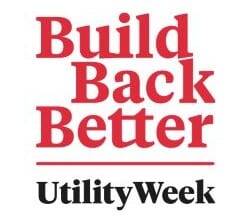You’ve reached your limit!
To continue enjoying Utility Week Innovate, brought to you in association with Utility Week Live or gain unlimited Utility Week site access choose the option that applies to you below:
Register to access Utility Week Innovate
- Get the latest insight on frontline business challenges
- Receive specialist sector newsletters to keep you informed
- Access our Utility Week Innovate content for free
- Join us in bringing collaborative innovation to life at Utility Week Live

Scotland is way ahead when it comes to embracing energy efficiency, spending £27 per capita compared with England’s £8. Dr Faye Wade, ClimateXChange Research Fellow, Sociology, University of Edinburgh, has been evaluating how effective it has been.
The need to retrofit
 The UK has some of the poorest performing buildings in Europe. This means they can be hard to keep warm, draughty, and expensive to heat. These poor quality buildings also result in high energy demand, with homes contributing approximately 25 per cent of UK carbon emissions . To meet the UK Government’s target for net zero emissions by 2050, retrofitting the building stock will be required.
The UK has some of the poorest performing buildings in Europe. This means they can be hard to keep warm, draughty, and expensive to heat. These poor quality buildings also result in high energy demand, with homes contributing approximately 25 per cent of UK carbon emissions . To meet the UK Government’s target for net zero emissions by 2050, retrofitting the building stock will be required.
Energy retrofitting can include improvements to the building fabric, for example, through wal l, loft and floor insulation, and improved glazing. Retrofitting can also mean installing more efficient and low carbon technologies, for example, replacing a gas boiler with a heat pump.
l, loft and floor insulation, and improved glazing. Retrofitting can also mean installing more efficient and low carbon technologies, for example, replacing a gas boiler with a heat pump.
At the moment, governments use Energy Performance Certificates (EPCs) to monitor the standards of different buildings. EPCs use an A to G scale to indicate how energy efficient a building is: A is the most efficient rating, whilst G is the least efficient. 70% of the UK housing stock is currently rated below EPC C. This means that 19 million homes will need to be retrofitted within 30 years. For this, retrofitting will need to take place at a speed and scale that we have not seen before. The Scottish Government’s Energy Efficient Scotland programme offers valuable lessons for how this can be done.
What is Energy Efficient Scotland?
The Energy Efficient Scotland programme was introduced in 2016 to address the targets set out in Scottish Government’s Climate Change Plan. This includes targets for a 23 per cent reduction in emissions from residential buildings, and a 53 per cent reduction in emissions from non-domestic buildings, by 2032.
To achieve this, Scottish Government designated energy efficiency in buildings as a National Infrastructure Priority. They specify that, by 2032, a significant amount of heat will be provided by low carbon technologies (35 per cent in domestic buildings; 70 per cent in non-domestic buildings). This will be coupled with a reduction in buildings’ heat demand (15 per cent in domestic; 20 per cent in non-domestic) through the addition of energy efficiency measures. In this, there is a dual focus on achieving reductions in carbon emissions and removing poor energy efficiency as a driver of fuel poverty. Scottish Government have invested over £1 billion in energy efficiency programmes to tackle fuel poverty between 2009-2021, and committed £151 million to energy efficiency in the 2020-21 Budget, equivalent to around £27 per capita.
How will Energy Efficient Scotland be delivered?
 The Energy Efficient Scotland Routemap lays out plans for how better buildings will be delivered across Scotland. The overarching target is for all Scottish homes to be EPC C by 2040, where technically feasible and cost effective. There are phased targets for different sectors:
The Energy Efficient Scotland Routemap lays out plans for how better buildings will be delivered across Scotland. The overarching target is for all Scottish homes to be EPC C by 2040, where technically feasible and cost effective. There are phased targets for different sectors:
Improvements in the social rented sector will be encouraged through a revised Energy Efficiency Standard for Social Housing (EESSH). To encourage changes in the private rented sector, Scottish Government have introduced the Energy Efficiency (Private Rented Property)(Scotland) Regulations 2019. For privately owned homes, Scottish Government ran a consultation in March 2020 with a proposal that the EPC C by 2024 standard would be mandated through the Building Regulations. The main check for this would be the point of sale of the property. Energy Efficient Scotland also includes non-domestic buildings. There is no single standard for this, and the Routemap notes that non-domestic buildings: “will be assessed and improved to the extent that this is technically feasible and cost effective by 2040”.
Alongside regulating certain building sectors, Scottish Government are developing a suite of legislation to support activities taking place under Energy Efficient Scotland. Any efforts to reduce greenhouse gas emissions need to incorporate heat. Scottish Government have been focusing on “low regrets” solutions including technologies that, if installed now, are likely to save carbon in the long term.
They include heat pumps in homes that are off gas grid, and low-carbon heat networks in heat-dense (urban) areas. In support of this, Scottish Government have introduced the Heat Networks (Scotland) Bill which develops a regulation and licensing system for district and communal heating. A substantial expansion of heat networks in Scotland is anticipated.
Additional support being developed includes a framework for consumer protection; consideration of skills and training; supply chains and quality assurance; assessment; and mechanisms to provide financial support to private businesses and households planning retrofit.
Developing Energy Efficient Scotland
Scottish Government have been piloting the Energy Efficient Scotland programme since 2016. There have been three rounds of pilots, where local authorities bid for funding to complete different aspects of the retrofitting work. Broadly, there are three different elements that have been piloted:
- Domestic and non-domestic capital projects: blocks of flats, mixed-used tenement buildings (including domestic and non-domestic occupants), public and community buildings (museums, schools, community centres)
- Local Heat and Energy Efficiency Strategies (LHEES): local authorities develop 20-year plans for delivering energy efficiency improvements and low-carbon heat in distinct geographical areas.
- Self-funded engagement strategies: For both domestic and non-domestic buildings, developing advice and support to help customers (private property owners) implement energy efficiency measures in their home or business including both insulation and heating solutions.
What needs further work?
Here at the University of Edinburgh, we have been running a research project to evaluate the delivery of the Energy Efficient Scotland pilots. The most progress so far has been social housing, where councils or social landlords are able to conduct retrofitting programmes at scale. Retrofitting activities have delivered a reduction in energy consumption, in buildings as diverse as domestic homes, a bus station, museums and schools. A huge benefit of the Energy Efficient Scotland programme has been its incorporation of complex, hard-to-treat buildings. Piloting retrofit in these properties has revealed the importance of tradespeople with specialist skills (for example, heritage buildings) and the need for skills in coordinating multiple building owners (for example, in a mixed-use tenement building). Some of the crucial findings from the study are:
- There are critical gaps in the detail and accuracy of available data. Establishing channels for sharing data & best practice will be important.
- We still don’t know enough about the non-domestic sector. Available data for private non-domestic buildings is especially patchy. Local authorities hold god records of their own estate.
- Procurement frameworks and funding timescales favour larger contractors who are able to respond quickly. Procurement structures need ongoing development to support a variety of contractors – especially smaller, local contractors.
- Funding mechanisms do not support all of the work needed to carry out retrofit; for example, repairs may be needed on a property before energy efficiency measures can be installed. Mechanisms for financing different types of work need to be supported.
More of the study’s findings are available here and here.
Lessons for UK Government
A national-scale retrofitting programme like Energy Efficient Scotland is needed to treat buildings across the UK. In developing such a scheme, UK Government can learn from the approach that Scottish Government has taken so far. For example, by piloting the scheme, Scottish Government have recognised that there is a need for innovation, but also ‘space to fail’ in developing a programme of this scale.
UK Government could apply lessons from the Scottish Government pilots, or implement their own piloting programme. In addition, long term certainty is essential for providing clear signals to consumers and supply chains that this work is needed. Scottish Government are setting standards now for 2040. This provides a clear trajectory, with the necessary time to build capacity amongst supply chains, and awareness amongst building owners and occupants.
UK Government needs to provide similar, clear long-term targets. Finally, there is no single approach to tackle energy retrofitting across the entire building stock. Instead, a suite of complementary strategies including for example: regulation; training and accreditation for supply chain actors; financial support schemes; monitoring and assessment all need to be developed simultaneously. This creates a large and wide-reaching strategy with involvement from across society; now is the time for such a programme of work that benefits the economy and the environment.
Please login or Register to leave a comment.